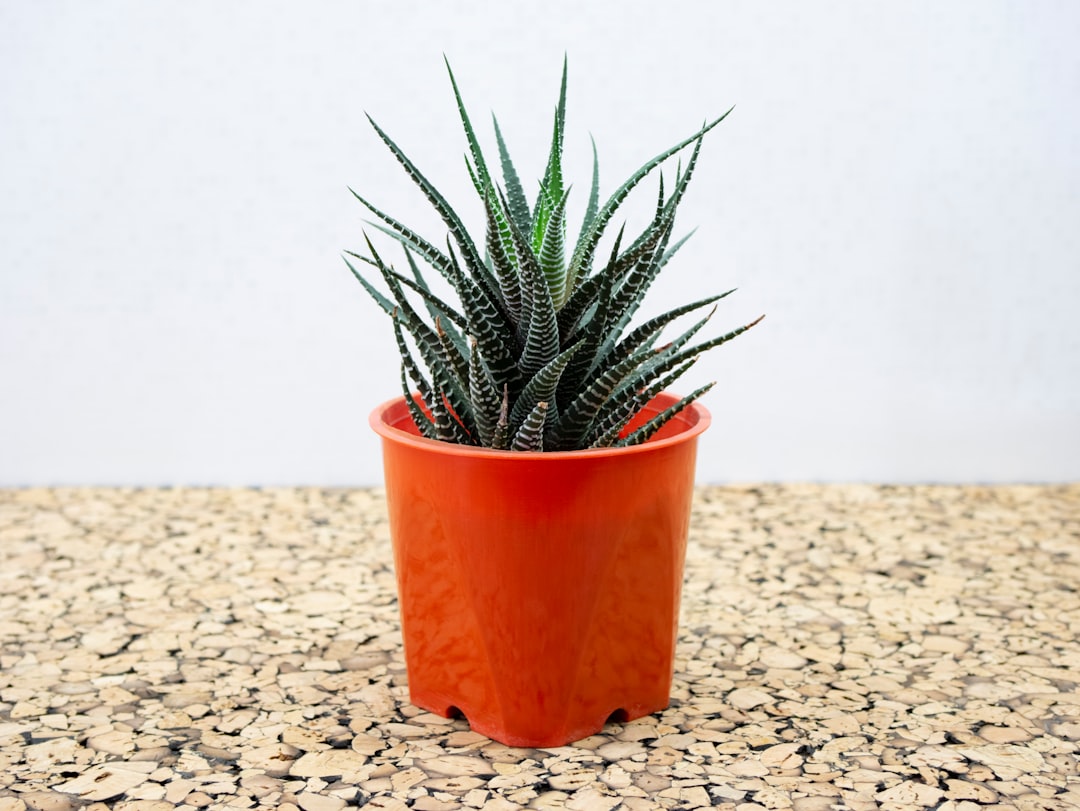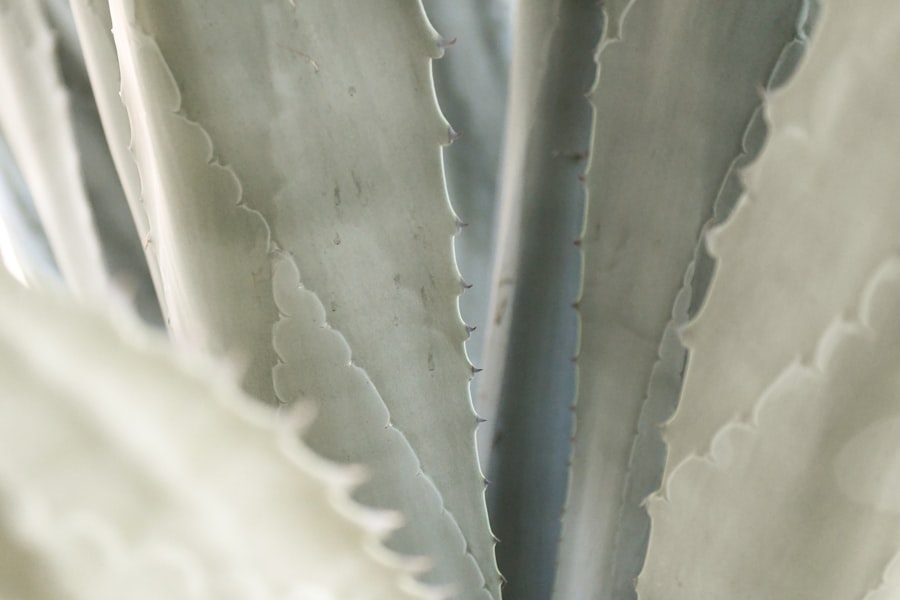Is Aloe a Cactus? Debunking the Common Misconception

The confusion between aloe and cactus plants has been a long-standing issue for many people. Both plants have similar appearances, with their thick, fleshy leaves and ability to survive in arid environments. However, it is important to understand the differences between these two plant families in order to properly care for them and utilize their unique benefits.
Key Takeaways
- Aloe and cactus are two distinct plant families with different characteristics and adaptations.
- Aloe vera is a succulent plant known for its medicinal properties, while cacti are known for their unique spines and ability to store water.
- Despite some similarities in appearance, aloe and cactus have different taxonomic classifications and anatomical structures.
- The misconception that aloe and cactus are the same plant likely stems from their shared use in skincare and health products.
- Both aloe and cactus have unique ecological adaptations that allow them to thrive in harsh environments, and are cultivated for a variety of uses including food, medicine, and ornamental purposes.
What is Aloe Vera?
Aloe vera is a succulent plant that belongs to the family Asphodelaceae. It is native to the Arabian Peninsula but is now cultivated worldwide for its medicinal and cosmetic uses. Aloe vera is characterized by its rosette of thick, fleshy leaves that contain a gel-like substance. This gel is rich in vitamins, minerals, and antioxidants, making it highly beneficial for the skin and overall health.
Aloe vera has been used for centuries for its healing properties. It is commonly used to treat burns, wounds, and skin conditions such as eczema and psoriasis. The gel can be applied topically or consumed orally in the form of juice or supplements. Aloe vera also has anti-inflammatory and immune-boosting properties, making it a popular ingredient in skincare products and dietary supplements.
What is a Cactus?
Cacti are a family of succulent plants known as Cactaceae. They are native to the Americas, particularly in arid regions such as deserts and dry grasslands. Cacti are characterized by their unique adaptations to survive in harsh environments, such as their ability to store water in their stems and leaves. They have thick, waxy skin to prevent water loss and spines for protection against herbivores.
There are over 2,000 species of cacti, each with its own unique features. Some common types of cacti include the saguaro cactus, barrel cactus, and prickly pear cactus. These plants have adapted to their environments by developing specialized structures, such as the saguaro cactus’s ability to store large amounts of water in its trunk and the prickly pear cactus’s edible fruits.
Aloe and Cactus: Similarities and Differences
| Characteristic | Aloe | Cactus |
|---|---|---|
| Watering Needs | Low | Low |
| Light Requirements | Bright, indirect light | Bright, direct light |
| Leaf Shape | Thick, fleshy leaves | Thin, spiky leaves |
| Flower Appearance | Tall, colorful spikes | Small, colorful blooms |
| Native Regions | Africa, Arabian Peninsula | Americas |
| Uses | Medicinal, cosmetic | Ornamental, food |
While aloe and cactus plants share some similarities, there are also distinct differences between the two. In terms of physical characteristics, both plants have thick, fleshy leaves that store water. However, aloe vera leaves are typically softer and more pliable compared to the rigid, spiky leaves of cacti. Aloe vera leaves also contain a gel-like substance, while cactus leaves do not.
In terms of growth habits, aloe vera is a perennial plant that grows in rosettes, with new leaves emerging from the center. Cacti, on the other hand, can have various growth forms, including columnar, globular, and creeping. Some cacti also produce flowers, while aloe vera plants typically only flower under specific conditions.
Reproductively, aloe vera plants produce offsets or “pups” that can be separated and replanted to propagate new plants. Cacti, on the other hand, reproduce through seeds or by producing new shoots from their base. These differences in reproductive strategies reflect the unique adaptations of each plant family to their respective environments.
The Origins of the Aloe-Cactus Misconception
The confusion between aloe and cactus plants can be traced back to historical contexts and factors that contribute to misidentification. In ancient times, explorers and traders encountered these plants in different regions of the world and often mislabeled them due to their similar appearances. This misidentification was perpetuated over time and has led to the ongoing confusion between aloe and cactus plants.
Additionally, the popularity of aloe vera as a medicinal plant has led to the mislabeling of other succulent plants as “aloe” in order to capitalize on its reputation. This has further contributed to the misconception that all succulent plants with fleshy leaves are aloe plants. It is important to properly identify these plants to ensure their correct usage and benefits.
Aloe and Cactus: Taxonomy and Classification

In terms of taxonomy, aloe and cactus plants belong to different families and orders. Aloe vera belongs to the family Asphodelaceae and the order Asparagales, while cacti belong to the family Cactaceae and the order Caryophyllales. These taxonomic differences reflect the distinct evolutionary lineages of these plant families.
The family Asphodelaceae includes other succulent plants such as Haworthia and Gasteria, which share similar characteristics with aloe vera. The family Cactaceae, on the other hand, is unique to cacti and includes various genera such as Opuntia, Echinocactus, and Mammillaria. Understanding the taxonomic classification of these plants can help in correctly identifying them and understanding their evolutionary relationships.
Aloe and Cactus: Morphology and Anatomy
The physical structures and internal anatomy of aloe and cactus plants also differ. Aloe vera leaves have a gel-like substance in their inner layers, which is responsible for their healing properties. The leaves are composed of an outer protective layer, a middle layer containing the gel, and an inner layer that transports water and nutrients.
Cactus stems, on the other hand, are modified for water storage. They have a thick outer layer called the epidermis, which prevents water loss, and an inner layer called the cortex, which stores water. Some cacti also have specialized structures called areoles, from which spines, flowers, and new shoots emerge. These morphological differences reflect the unique adaptations of aloe and cactus plants to their respective environments.
Aloe and Cactus: Ecological Adaptations
Aloe and cactus plants have evolved unique adaptations to survive in their harsh environments. Aloe vera, for example, has developed a shallow root system that allows it to quickly absorb water after rainfall. Its fleshy leaves store water for times of drought, and its gel-like substance helps to retain moisture and protect against dehydration.
Cacti, on the other hand, have evolved various adaptations to conserve water. Their thick, waxy skin reduces water loss through evaporation, and their spines provide shade and protection against herbivores. Some cacti also have shallow root systems that allow them to quickly absorb water from rain showers. These ecological adaptations enable aloe and cactus plants to thrive in arid regions with limited water availability.
Aloe and Cactus: Cultivation and Uses
Both aloe vera and cacti are popular plants for cultivation due to their unique characteristics and benefits. Aloe vera is relatively easy to grow and can be cultivated both indoors and outdoors. It requires well-draining soil and bright, indirect sunlight. Aloe vera plants can be propagated through offsets or by planting leaf cuttings.
Cacti are also popular houseplants due to their low maintenance requirements and unique appearance. They thrive in well-draining soil and bright sunlight. Cacti can be propagated through seeds or by taking stem cuttings. Some cacti also produce beautiful flowers, making them popular ornamental plants.
In terms of uses, aloe vera is widely used in the cosmetic industry for its moisturizing and healing properties. It is found in various skincare products such as lotions, creams, and gels. Aloe vera is also used in the food industry as an ingredient in beverages, desserts, and health supplements.
Cacti have various uses as well. Some species, such as the prickly pear cactus, produce edible fruits that are used in culinary dishes. The saguaro cactus has cultural significance for Native American tribes and is protected in certain regions. Cacti are also used in landscaping and gardening for their unique shapes and ability to thrive in arid environments.
Aloe and Cactus, Two Distinct Plant Families
In conclusion, aloe and cactus plants may share some similarities in appearance and ability to survive in arid environments, but they belong to different plant families with distinct characteristics and adaptations. Aloe vera is a succulent plant known for its healing properties and gel-like substance, while cacti are a family of succulent plants with unique adaptations for water storage and protection.
Understanding the differences between aloe and cactus plants is important for their proper care and utilization. Correctly identifying these plants ensures that their various uses and benefits can be maximized. Whether it is for medicinal purposes, cosmetic applications, or simply enjoying their unique beauty, aloe and cactus plants offer a wide range of benefits for those who appreciate them.
If you’re interested in learning more about the aloe plant and its fascinating characteristics, you might want to check out this informative article on Lawn World’s website. They have a comprehensive guide on various types of plants, including cacti and succulents like the aloe plant. To explore further, you can visit their website at https://www.lawnworld.com/. Additionally, if you’re looking for a sitemap to navigate through their content easily, you can find it here: https://www.lawnworld.com/sitemap.html. Happy reading and discovering the wonders of the aloe plant!
FAQs
What is an aloe plant?
An aloe plant is a succulent plant species that belongs to the genus Aloe. It is known for its fleshy leaves that store water, making it drought-resistant.
What is a cactus?
A cactus is a type of succulent plant that belongs to the family Cactaceae. It is known for its spiny stems and leaves, and its ability to store water in its thick, fleshy tissues.
Is an aloe plant a cactus?
No, an aloe plant is not a cactus. Although both plants are succulents and have similar adaptations for water storage, they belong to different plant families. Aloe plants belong to the family Asphodelaceae, while cacti belong to the family Cactaceae.
What are the differences between aloe plants and cacti?
Aloe plants and cacti have several differences. Aloe plants have fleshy leaves that are usually soft and pliable, while cacti have spiny stems and leaves that are often rigid. Aloe plants also have a different flower structure than cacti, with tubular flowers that are often brightly colored. Additionally, aloe plants are native to Africa, while cacti are native to the Americas.
Can aloe plants and cacti be grown together?
Yes, aloe plants and cacti can be grown together in the same container or garden bed, as long as their growing conditions are similar. Both plants require well-draining soil and plenty of sunlight, but cacti may require less water than aloe plants. It is important to choose species that have similar water and light requirements when growing them together.



